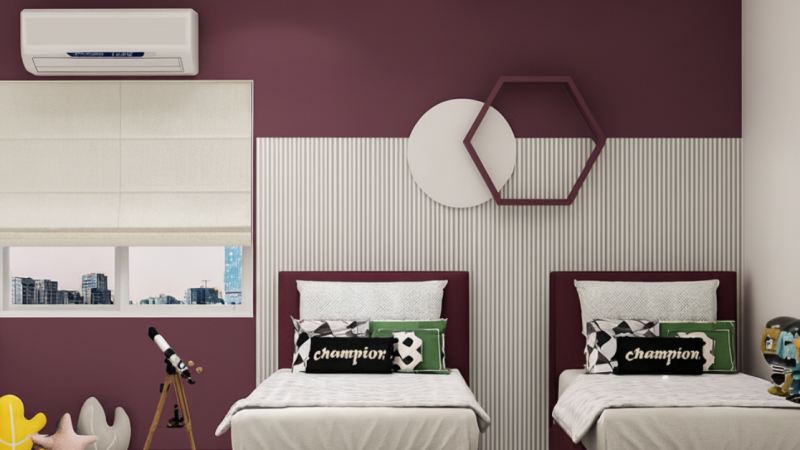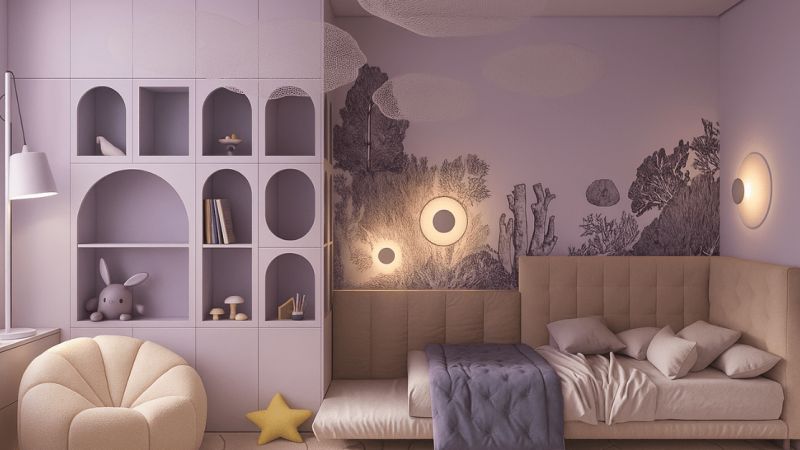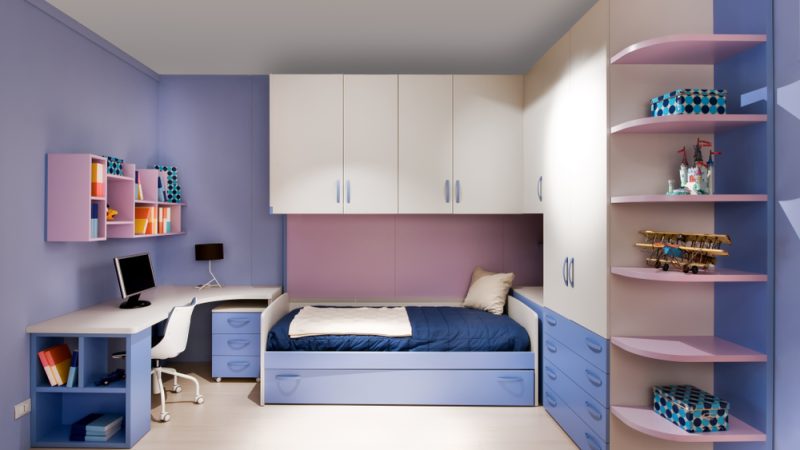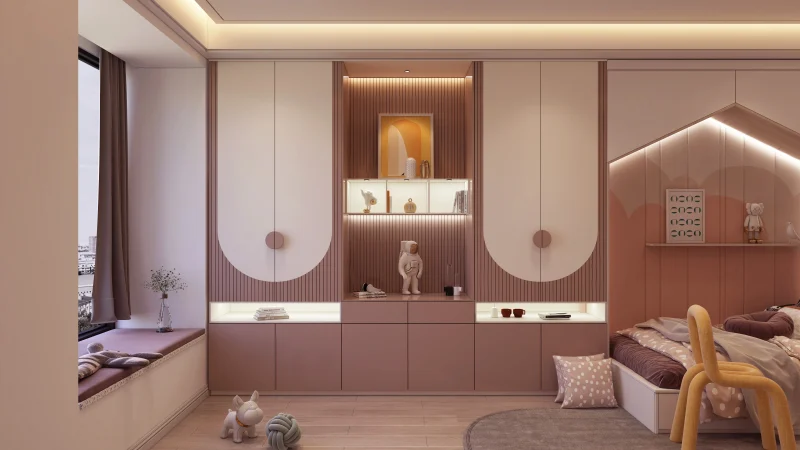Designing Happy Spaces: Modern Kids Room Interior Design Guide
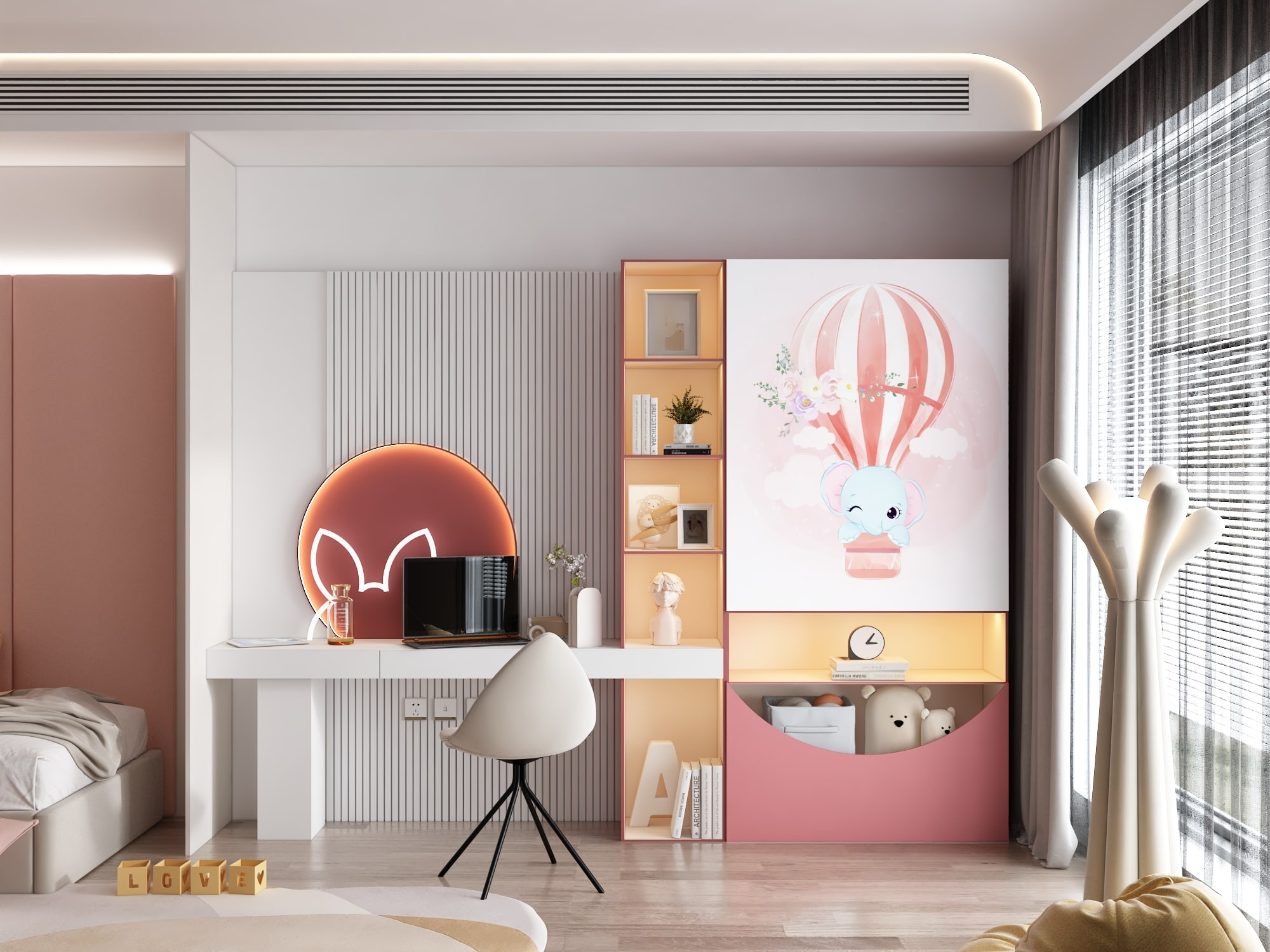
Every parent wants their child’s room to reflect their child’s personality while also being fun and sensible. Unlike other spaces in the house, a kids room interior design must be functional, safe, playful, and adaptable as the child grows.
With smart planning, kids’ rooms can spark creativity, provide comfort, and simplify organization for parents. This guide answers key design questions, highlights trends, and shares expert tips to make the process easier.
What Makes a Good Kids Room Interior Design?
A well-designed kids’ room balances fun with functionality while meeting the needs of both child and parent.
Important aspects of kids room interior design include:
-
Safety first – Rounded furniture edges, non-toxic paints, and secure shelves.
-
Ample storage – Smart solutions to manage toys, books, and clothes.
-
Age-appropriate design – Adaptable elements that grow with the child.
-
Playful themes – Wallpapers, décor, or accent walls that inspire imagination.
-
Comfort – Cozy bedding and ergonomic study furniture.
👉 The room should feel like more than just a space—it should feel like the child’s own little world.
Planning Your Kid’s First Bedroom Furniture? Here’s What You Need to Know!
How Do You Choose the Best Color Scheme for Kids’ Rooms?
The color palette influences both mood and creativity. While parents may prefer bright shades, balance is essential.
-
Soft pastels – Calm and perfect for nurseries or toddlers.
-
Bold accents – Reds, blues, or yellows work well when paired with neutrals.
-
Gender-neutral palettes – Greens, whites, greys, and earthy tones suit all ages.
-
Theme-based colors – Ocean blues for marine themes, earthy greens and browns for jungle themes.
💡 Pro Tip: Since kids often use walls as a canvas, choose washable paints or easy-clean wallpapers.
What Furniture Is Essential in Kids Room Interior Design?
Furniture in a child’s room should be durable, practical, and scalable.
Essential furniture pieces include:
-
Bed – From cribs and toddler beds to bunk beds and full-size beds.
-
Study area – A desk and ergonomic chair for schoolwork and hobbies.
-
Wardrobes – With low sections for kids to easily access and learn organization.
-
Storage units – Toy bins, open shelves, or under-bed drawers for clutter-free spaces.
-
Seating – Bean bags, floor cushions, or small chairs for casual comfort.
👉 Always pick scale-friendly furniture that can adapt as the child grows.
What Are the New Trends in Children’s Room Interior Design?
Modern kids’ rooms blend style with smart utility. Trending ideas include:
-
Themed rooms – Space, jungle, princess castles, superheroes, or sports.
-
Bunk beds with storage – Perfect for siblings and compact spaces.
-
Interactive walls – Chalkboard paint, whiteboards, or magnetic walls.
-
Minimalist designs – Clean layouts with hidden storage.
-
Eco-friendly interiors – Bamboo, jute rugs, organic fabrics, and sustainable furniture.
-
Tech-friendly corners – Organized spaces with charging stations and study lamps.
👉 These designs combine modern aesthetics with functionality, making kids’ rooms future-ready.
How to Design a Kids’ Room in Small Spaces?
Even compact bedrooms can look spacious with clever interior design techniques:
-
Install vertical storage with tall wardrobes and wall shelves.
-
Use multi-purpose furniture like beds with storage or foldable desks.
-
Opt for sliding doors instead of swinging ones.
-
Add mirrors and light colors to create an illusion of space.
-
Declutter regularly—keep only age-relevant toys and clothes.
👉 Smart space optimization ensures even small kids’ rooms feel playful and functional.
How Do You Ensure Safety in Kids Room Interiors?
Safety is the foundation of kids room interior design. Follow these guidelines:
-
Choose rounded furniture edges to prevent injuries.
-
Avoid heavy décor items that can fall.
-
Use non-toxic, low-VOC paints for walls.
-
Secure wardrobes and shelves to the wall.
-
Install child-safe plugs and hide electrical wires.
-
Place soft rugs or mats to cushion falls.
👉 A safe environment provides freedom for kids and peace of mind for parents.
Should Kids Have a Themed Room?
Themed rooms can be magical, but they should be designed thoughtfully.
-
Younger children enjoy cartoon or fairy-tale themes.
-
Older children prefer hobbies or passion-based themes (sports, music, travel).
-
Neutral themes like nature, geometric patterns, or pastels stay timeless.
💡 Pro Tip: Keep the core design simple and use removable elements (posters, wall decals, bedding). This way, the theme can easily change as your child grows.
What Are Smart Strategies for Organizing a Kids’ Room?
Keeping a kids’ room organized is often a challenge. Try these strategies:
-
Use labeled bins and baskets for toys.
-
Organize wardrobes by color or category.
-
Install open shelves for easy access.
-
Add under-bed storage for seasonal or less-used items.
-
Declutter regularly by donating or discarding outgrown items.
👉 Teaching kids to use these systems builds early responsibility.
What Are the Best Lighting Options for a Kids’ Room?
Lighting should adapt to different activities. Use layered lighting for best results:
-
Ambient lighting – Ceiling or recessed lights for overall brightness.
-
Task lighting – Study lamps or bedside reading lights.
-
Accent lighting – Fairy lights, night lamps, or playful fixtures.
👉 Warm lighting tones enhance coziness and sleep quality.
Conclusion: Designing Happy Spaces for Kids
A well-planned kids bedroom interior design is more than décor—it’s about creating a safe, fun, and nurturing environment where your child can learn, play, and rest. From furniture and colors to organization and lighting, every detail shapes their daily comfort and growth.
By investing creativity and thought into your child’s room, you’re giving them a personalized space that evolves as they grow.


